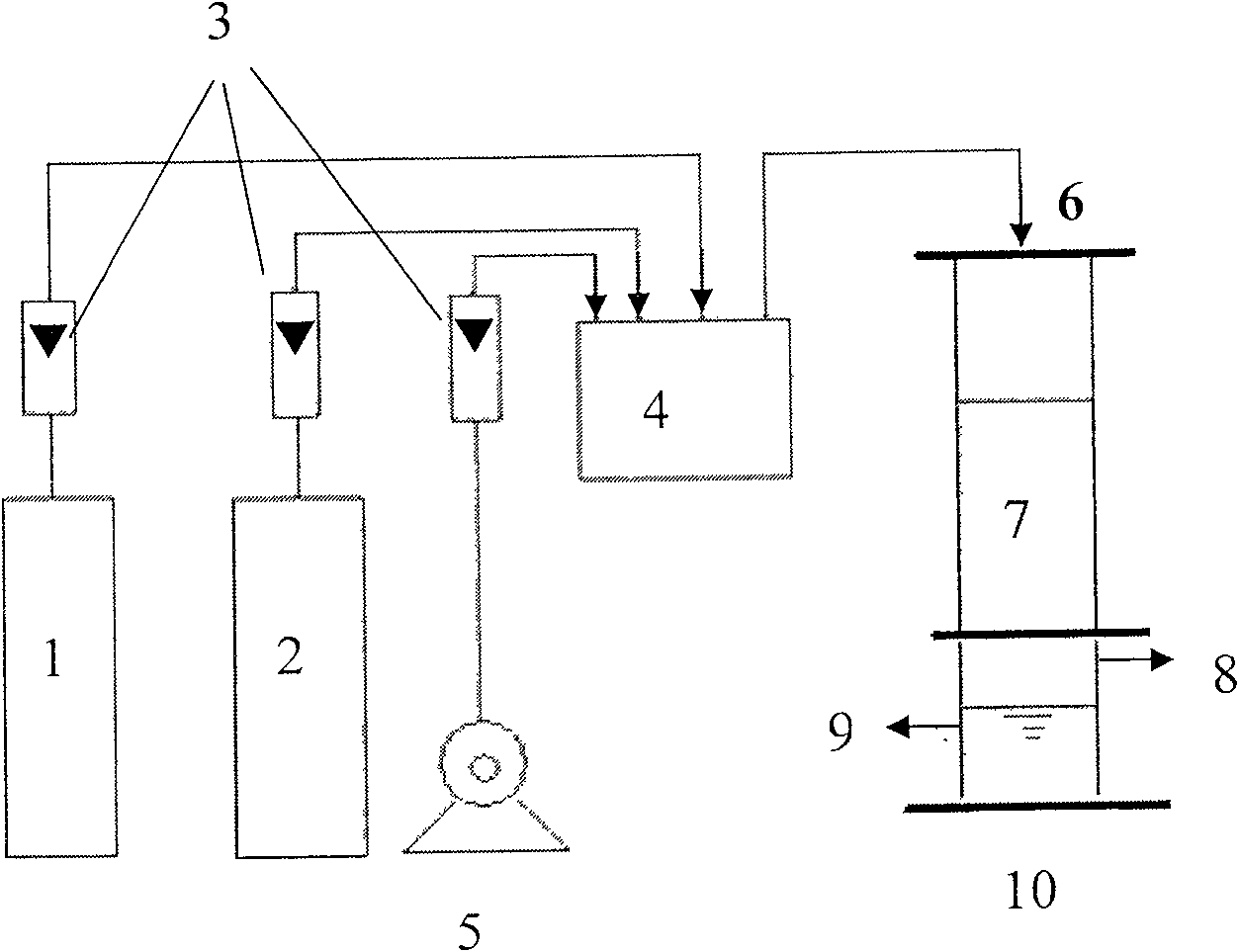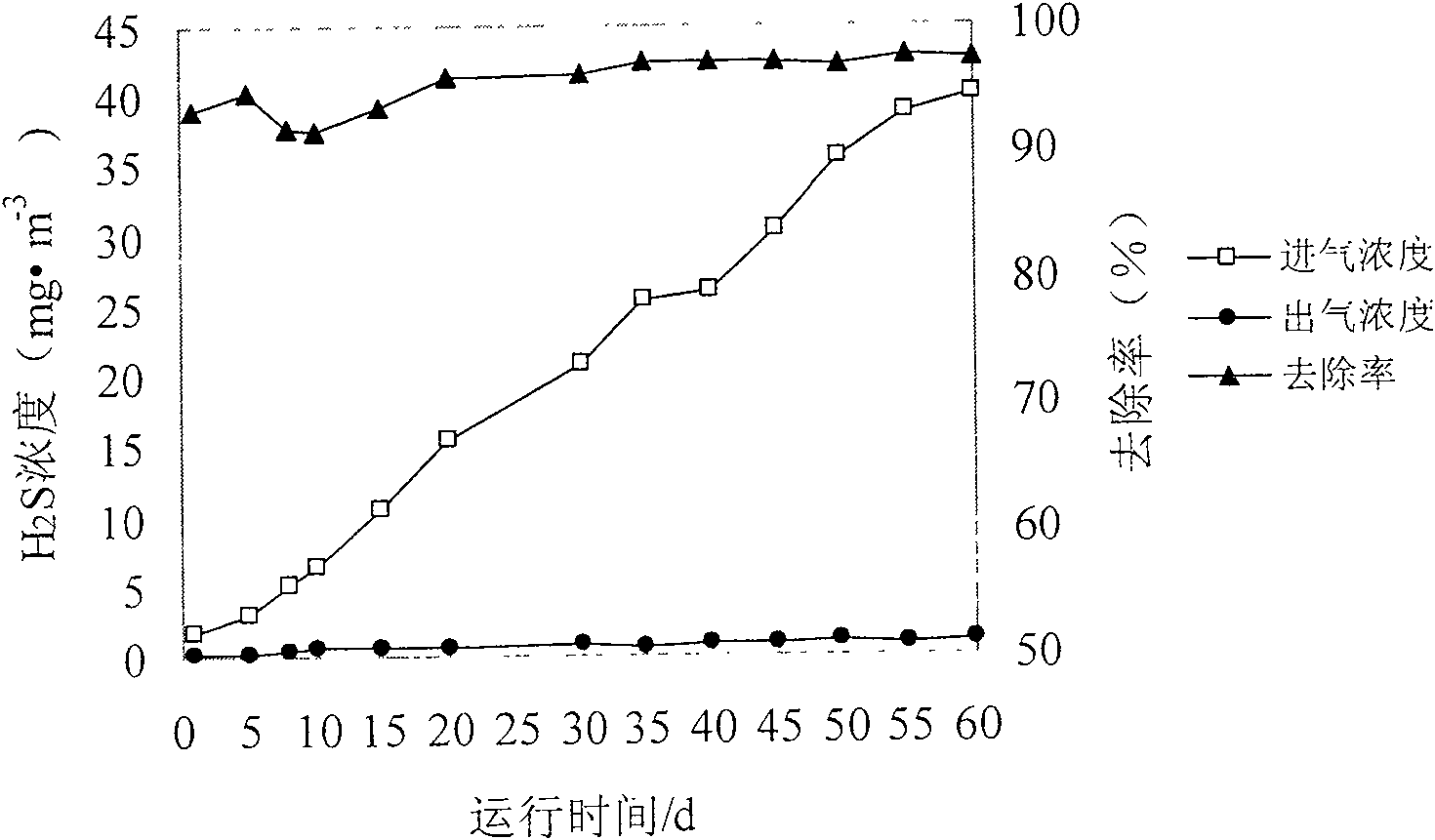Microorganism synchronously removing ammonia and sulfureted hydrogen foul gas and method for preparing the same
A malodorous gas and microorganism technology, applied in the field of microorganisms, can solve difficult and difficult problems such as NH3 removal efficiency, and achieve the effects of easy use, simple composition and culture conditions, and simple operation
- Summary
- Abstract
- Description
- Claims
- Application Information
AI Technical Summary
Problems solved by technology
Method used
Image
Examples
Embodiment 1
[0035] Example 1 Study on Growth Temperature of Acidophilus Thiobacillus Thiooxidans CCW-Y2 Strain
[0036] Use SOB medium, pH = 3.0, culture at a temperature range of 15-55° C., and the test is carried out on a shaker with temperature control capability in a temperature control room. The amount of sulfate ion formed by sulfur oxidation and the pH change in the culture solution were used to indirectly calculate the oxidation of elemental sulfur and the growth status of bacteria. The growth results after 5 days of cultivation are shown in Table 1.
[0037] Table 1 The growth of CCW-Y2 strain at different temperatures
[0038] Culture temperature (℃)
[0039] It can be seen from the data in Table 1 that the optimal temperature for the growth of CCW-Y2 strain is 28-30°C, and it is a kind of mesophilic bacteria. It can still grow below 15°C, but hardly grows above 55°C.
Embodiment 2
[0040] Example 2 Study on Growth pH of Acidophilus Thiobacillus Thiooxidans CCW-Y2 Strain
[0041] The SOB culture medium is used, the temperature is 30°C, and the culture is carried out in the range of pH=0.5-5.5, and the experiment is carried out on a shaker with temperature control capability in a temperature control room. The amount of sulfate ion formed by sulfur oxidation and the pH change in the culture solution were used to indirectly calculate the oxidation of elemental sulfur and the growth state of bacteria. The growth results after 5 days of cultivation are shown in Table 2.
[0042] Table 2 The growth of CCW-Y2 strain at different pH
[0043] Medium pH
[0044] The data in Table 2 show that the CCW-Y2 strain can grow at a pH of 0.5 to 5.5, and the optimum pH for growth is 2.0 to 3.0. It is an acidophilic bacteria.
Embodiment 3
[0045] Example 3 Research on Ammonium Sulfate Resistance of Acidophilus Thiobacillus Thiooxidans CCW-Y2 Strain
[0046] A series of SOB medium with different contents of ammonium sulfate were used to cultivate at a temperature of 30°C and pH=2.5, and the experiment was carried out on a shaker with temperature control capability in a temperature control room. The specific sulfur oxidation rate (the amount of sulfur oxidation per unit mass of DCW per unit time) was used to investigate the oxidation of elemental sulfur and the growth status of bacteria. The growth results after 5 days of culture are shown in Table 3.
[0047] Table 3 The growth of CCW-Y2 strain under different ammonium sulfate concentrations
[0048] Ammonium sulfate concentration (g / L)
[0049] It can be seen from the data in Table 3 that when the concentration of ammonium sulfate rises from 0.5g / L to 10g / L, the specific sulfur oxidation rate increases accordingly. But when the concentration of ammoni...
PUM
 Login to View More
Login to View More Abstract
Description
Claims
Application Information
 Login to View More
Login to View More - R&D
- Intellectual Property
- Life Sciences
- Materials
- Tech Scout
- Unparalleled Data Quality
- Higher Quality Content
- 60% Fewer Hallucinations
Browse by: Latest US Patents, China's latest patents, Technical Efficacy Thesaurus, Application Domain, Technology Topic, Popular Technical Reports.
© 2025 PatSnap. All rights reserved.Legal|Privacy policy|Modern Slavery Act Transparency Statement|Sitemap|About US| Contact US: help@patsnap.com



